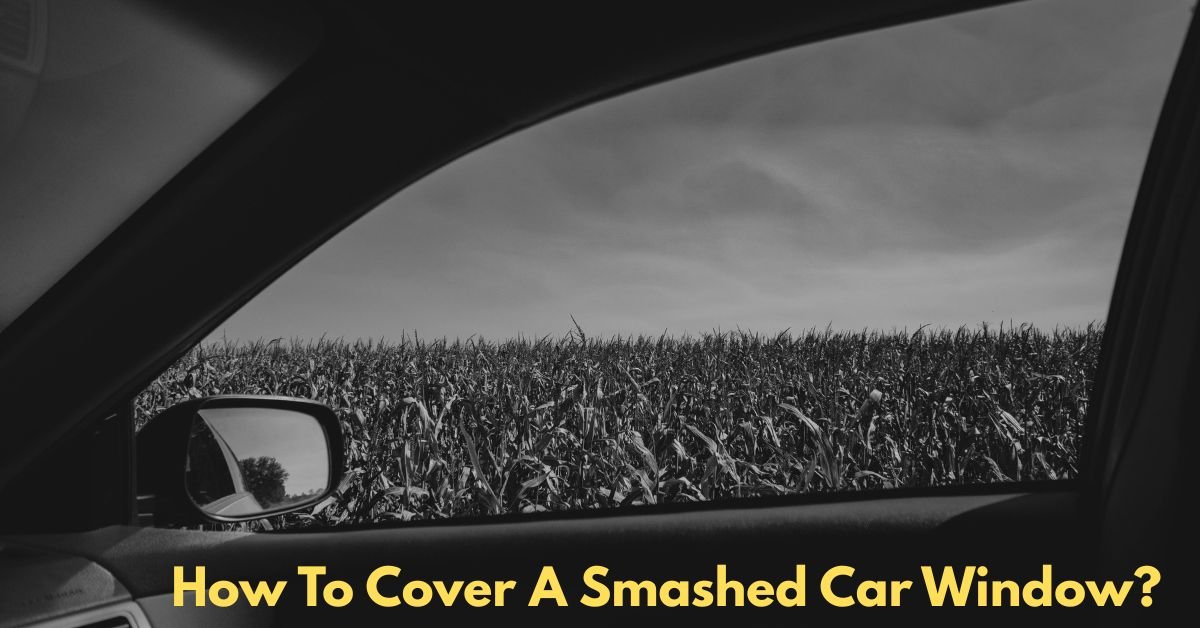There’s never a convenient time to find your car window shattered—whether it was due to an attempted break-in, a flying rock, or an unfortunate accident. There is more to a smashed car window than just annoyance. It poses immediate concerns about weather damage, theft, and safety. While getting it professionally repaired is essential, sometimes you need a quick, temporary fix to protect your car until then. In this post, we’ll go over how to cover a smashed car window the right way.
How to Cover a Smashed Car Window: A Step-by-Step Guide
Step 1: Assess the Damage
Before you dive into covering the window, take a moment to safely assess the damage. Is the glass shattered but still mostly in place, or has it completely fallen out? Knowing the extent of the break will help you decide what materials you’ll need and how secure your temporary fix needs to be.
Also, check for any injuries caused by broken glass. If you or a passenger were in the car during the incident, take care of any medical issues first.
Step 2: Gather Your Supplies
To properly cover a broken car window, you’ll need a few basic supplies. Most of these can be found at home or purchased quickly from a hardware or automotive store:
- Thick gloves (to protect your hands from glass)
- Safety goggles
- Vacuum or brush/dustpan (to remove glass shards)
- Microfiber cloth
- Rubbing alcohol or window cleaner
- Clear plastic sheeting or heavy-duty garbage bags
- Duct tape or masking tape
- Scissors
If you have access to a plastic drop cloth or even temporary auto window film, that’s even better than a garbage bag.
Step 3: Clean Up Broken Glass
Before applying anything over the broken window, you’ll want to remove as much glass as possible—both inside and outside the vehicle. If any large parts are still hanging in the window frame, carefully remove them while wearing safety goggles and gloves. Use a vacuum or a handheld broom to get small shards from the seats, floor, and crevices.
Be thorough—glass can hide in door panels or in between seats and pose a long-term safety risk.
Step 4: Clean the Window Frame
Use a microfiber cloth with rubbing alcohol or window cleaner to wipe down the window frame. This removes dust, oils, or debris that could keep tape from sticking properly. Make sure the area is fully dry before moving on.
Must Read: How Much To Buff Out Scratches On A Car?

Step 5: Measure and Cut Your Covering Material
If you’re using plastic sheeting, cut a piece large enough to cover the window opening with an extra 1–2 inches on each side for secure taping. The same applies if you’re using a garbage bag—double it up if it feels too thin.
Try to cut the plastic as neatly as possible; clean edges make it easier to get a tight seal.
Step 6: Secure the Plastic Over the Window
From the inside of the car, stretch the plastic over the window opening and tape it securely to the window frame. Use long strips of tape to ensure a tight, smooth seal, overlapping slightly as you go. Avoid leaving gaps where wind or rain could get through.
Pro Tip: Taping from the inside helps reduce wind noise when driving and prevents the plastic from being torn off by air resistance.
If the frame is too damaged or uneven to tape on the inside, you can tape it from the outside, but you’ll need to be extra cautious to make it weather-tight.
Step 7: Test for Security
Before hitting the road, give the plastic a gentle tug and press around the edges to make sure it’s sealed. If it flaps or moves easily, add more tape or consider using a thicker material.
Also, keep your driving speed conservative while using a temporary cover. Wind noise and vibration can be distracting and might cause the covering to loosen.
Final Thoughts
Covering a smashed car window is a temporary solution—it won’t protect your vehicle long-term, especially from weather or potential theft. Prioritize getting the window repaired or replaced professionally as soon as possible.
Avoid leaving valuables in the car and park in safe, well-lit locations in the interim. If the damage was caused by vandalism or theft, file a police report and contact your insurance company—they may cover the repair costs depending on your policy.
A broken car window is a hassle, but with the right tools and a calm approach, you can protect your vehicle until proper repairs are made. Stay safe and drive smart!
